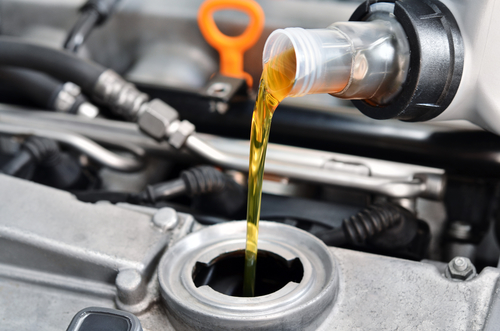From brake services to tire rotations, to an oil change, vehicles need regular maintenance to remain in good driving condition. Oil changes are one of the most critical vehicle maintenance services because they keep the engine’s motor oil clean and fresh. Here are five frequently asked questions about oil changes you should read through before you head out the door:
1. What’s involved in an oil change?
An oil change is the process of replacing the old motor oil and oil filter. Oil changes are performed over a disposal container to avoid oil waste. During an oil change, the drain screw located at the bottom of the oil pan is taken off and the oil drained. The drain screw is then put back on the oil pan, and a new oil filter is put in. After that, fresh motor oil is poured into the vehicle using the access spout located on top of the engine (should be clearly designated).
2. Where can I get an oil change?
Take your vehicle into a reputable auto care shop. These facilities will have skilled technicians that will know how to choose the perfect motor oil for your vehicle. They’ll also have the expertise it takes to diagnose other potential problems and help plan any important manufacturer recommended maintenance that may be coming up.
3. How long does it take?
A sign of a great auto repair shop is that they’re busy, so you’ll want to make an appointment. In most cases, an oil change will take between 20 to 30 minutes. The extra time may be required if you have additional car maintenance services carried out like having fluids inspected, etc.
4. Can I wait for my oil change?
Absolutely. Most professional auto shops have waiting rooms, and some even provide coffee, magazines, and WiFi.
5. When should I have my oil changed?
The best oil change advice we can give you is to check your owner’s manual. The frequency of oil changes can vary depending on the driving conditions. Normal driving conditions would mean no excessive driving uphill, no towing, not driving a lot in stop and go traffic, etc. Most vehicles today have built-in service reminder monitors that notify drivers when it’s time for an oil change. These monitors typically track the number of miles traveled, and some can sense how hard the vehicle is driven, adjusting accordingly. If your oil light comes on, get your car in for an oil change immediately.
Failing to have an oil change when it’s needed can quickly turn into a major problem for drivers. Why? Because, as old oil travels through the engine, it becomes a thick, petroleum-like sludge. When this “sludge” gets into the engine, it can prevent the parts from moving. The first signs that there’s a problem are knocking sounds and vibrations coming from the engine. If you ignore these symptoms, you can end up with a seized engine. At this point, your vehicle will likely need a new engine installed.
Before you head out the door, be sure you’ve changed your oil. If you’re busy with the holidays, bring your car on by, and we’ll get it done for you. Contact us today.





